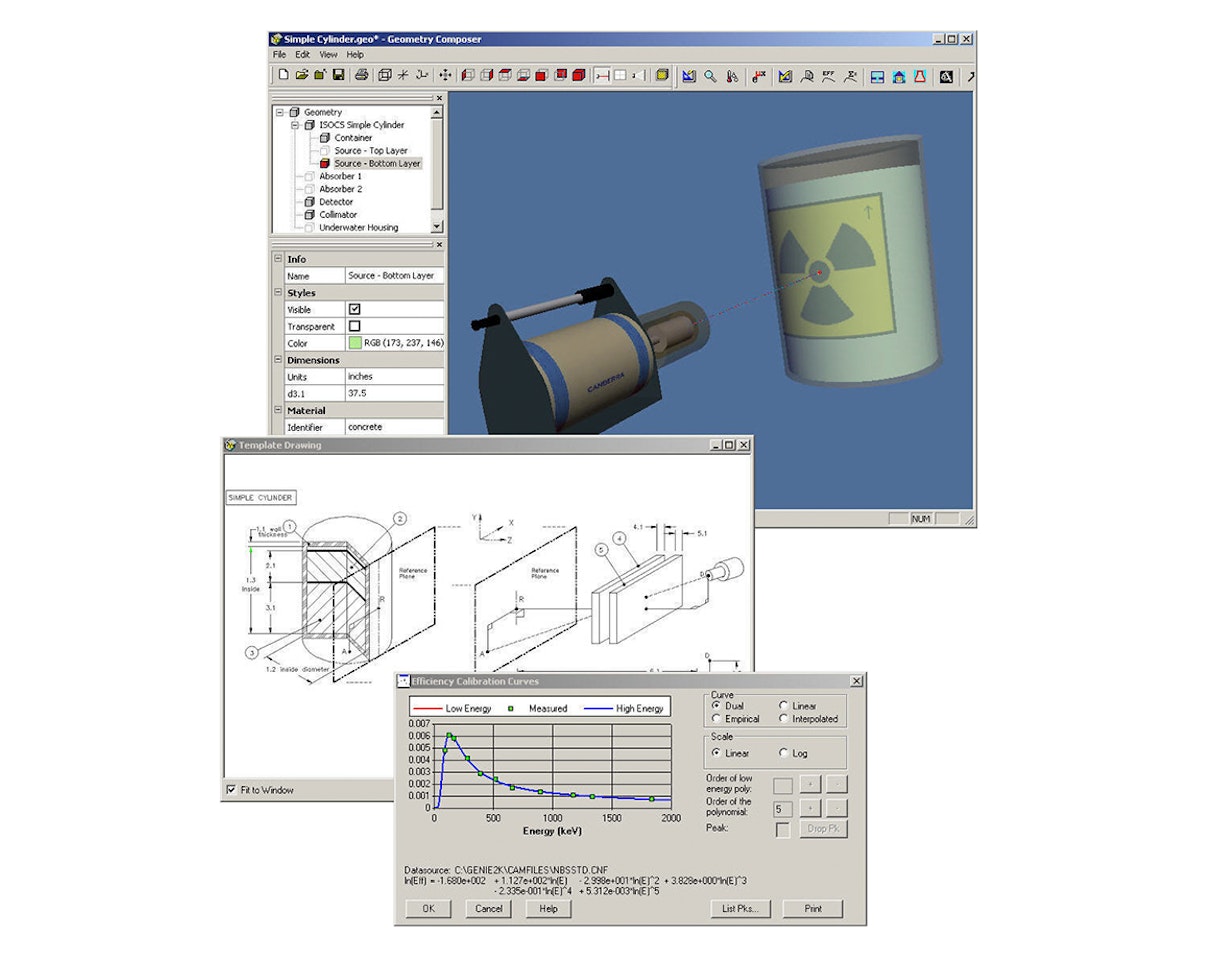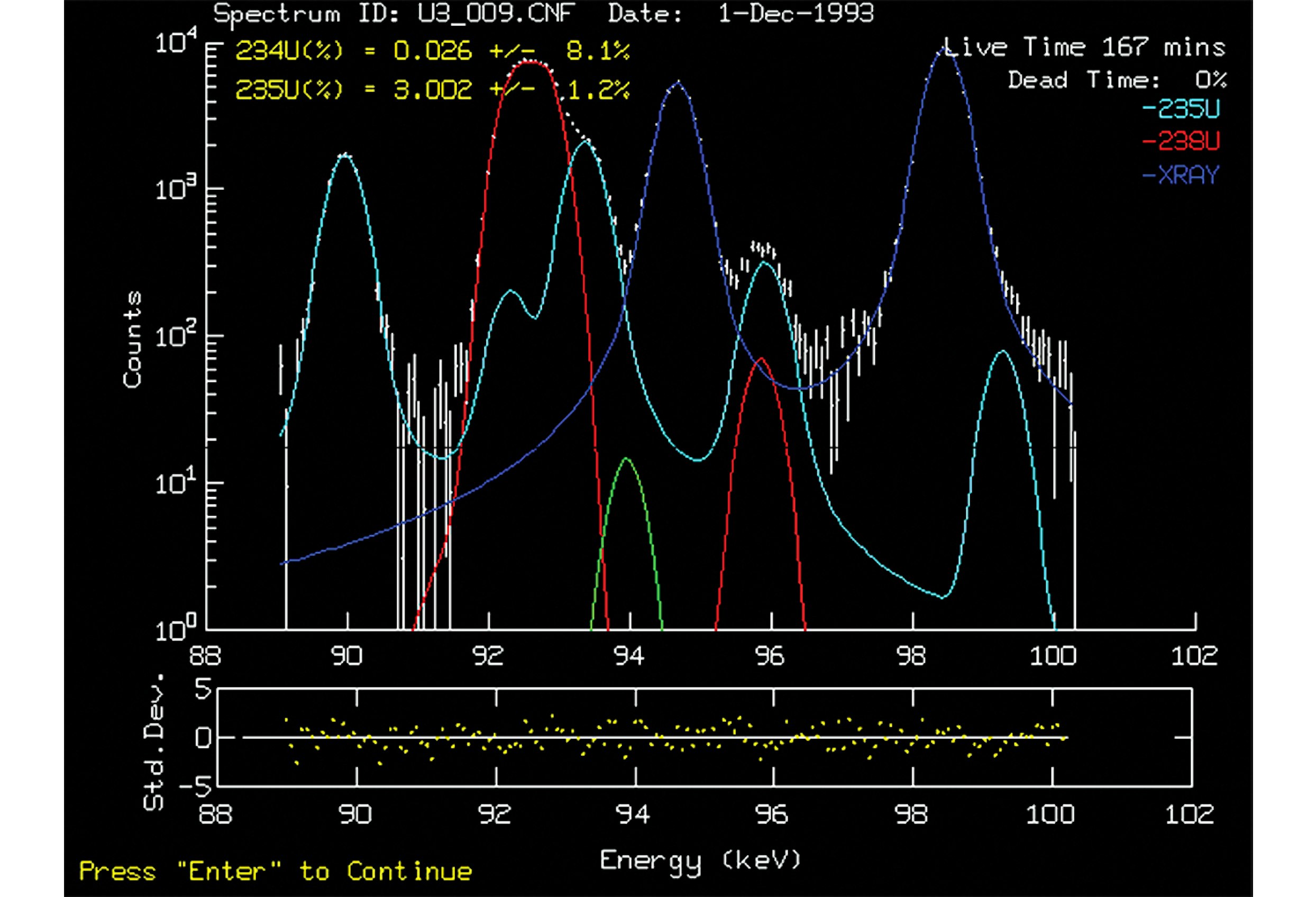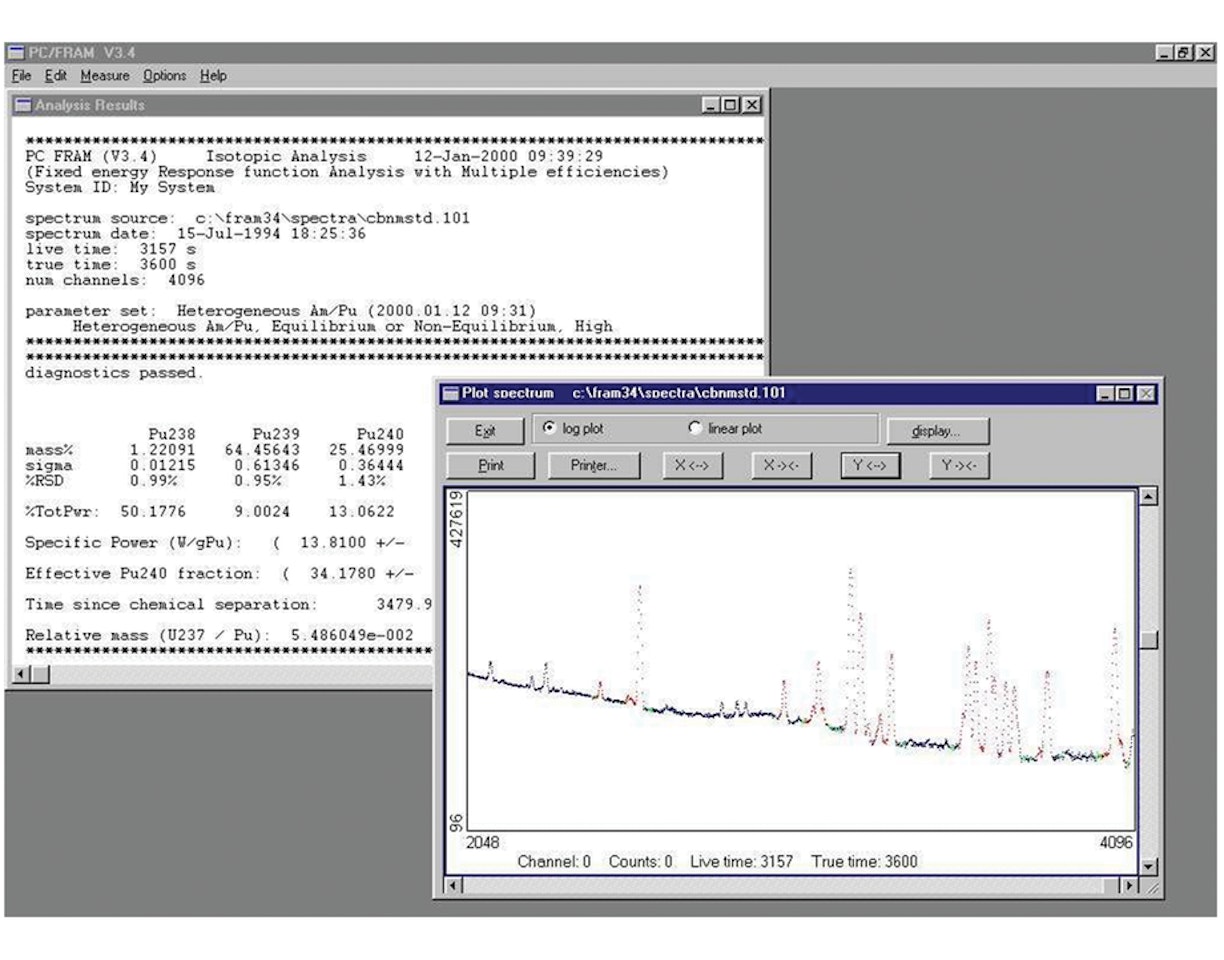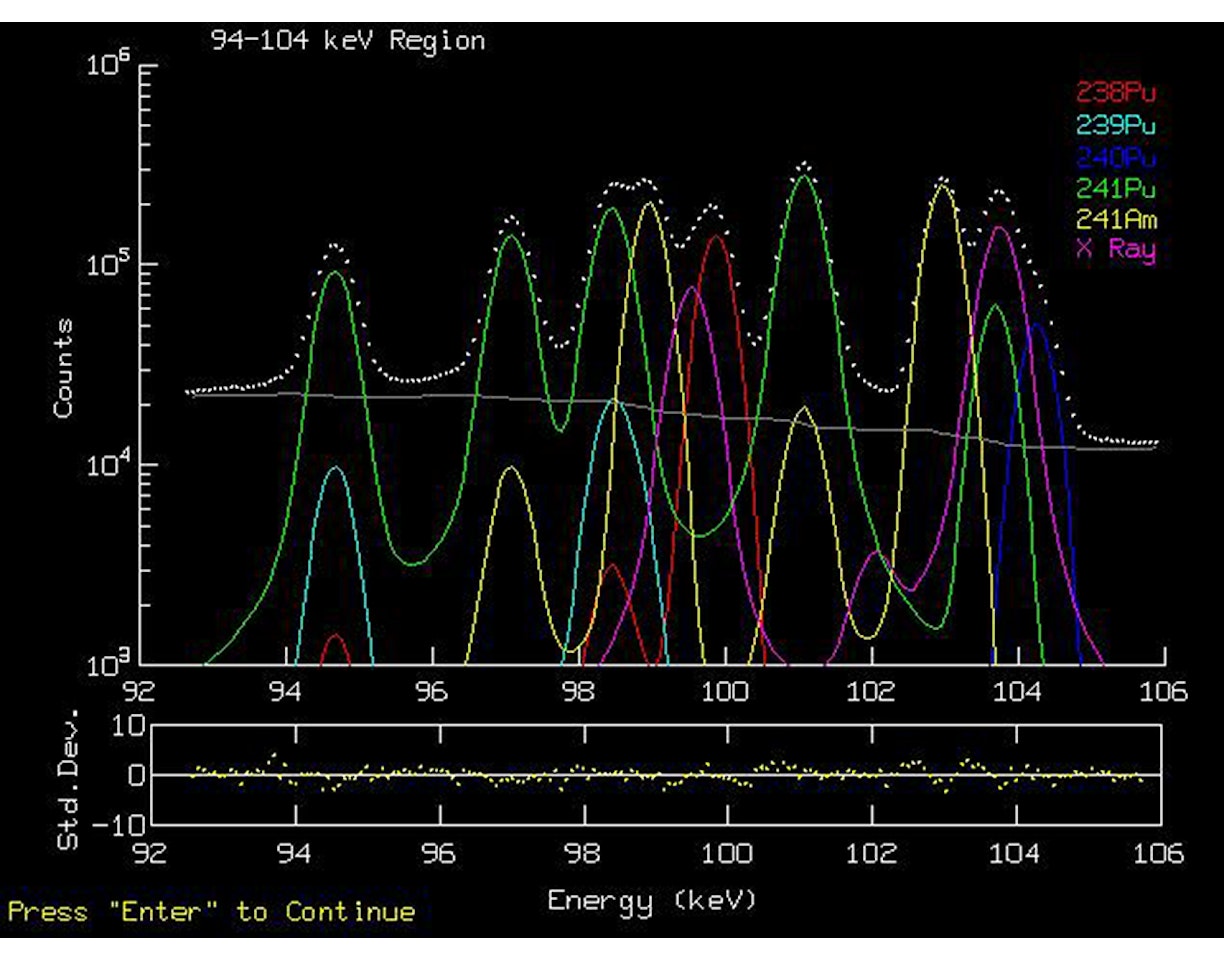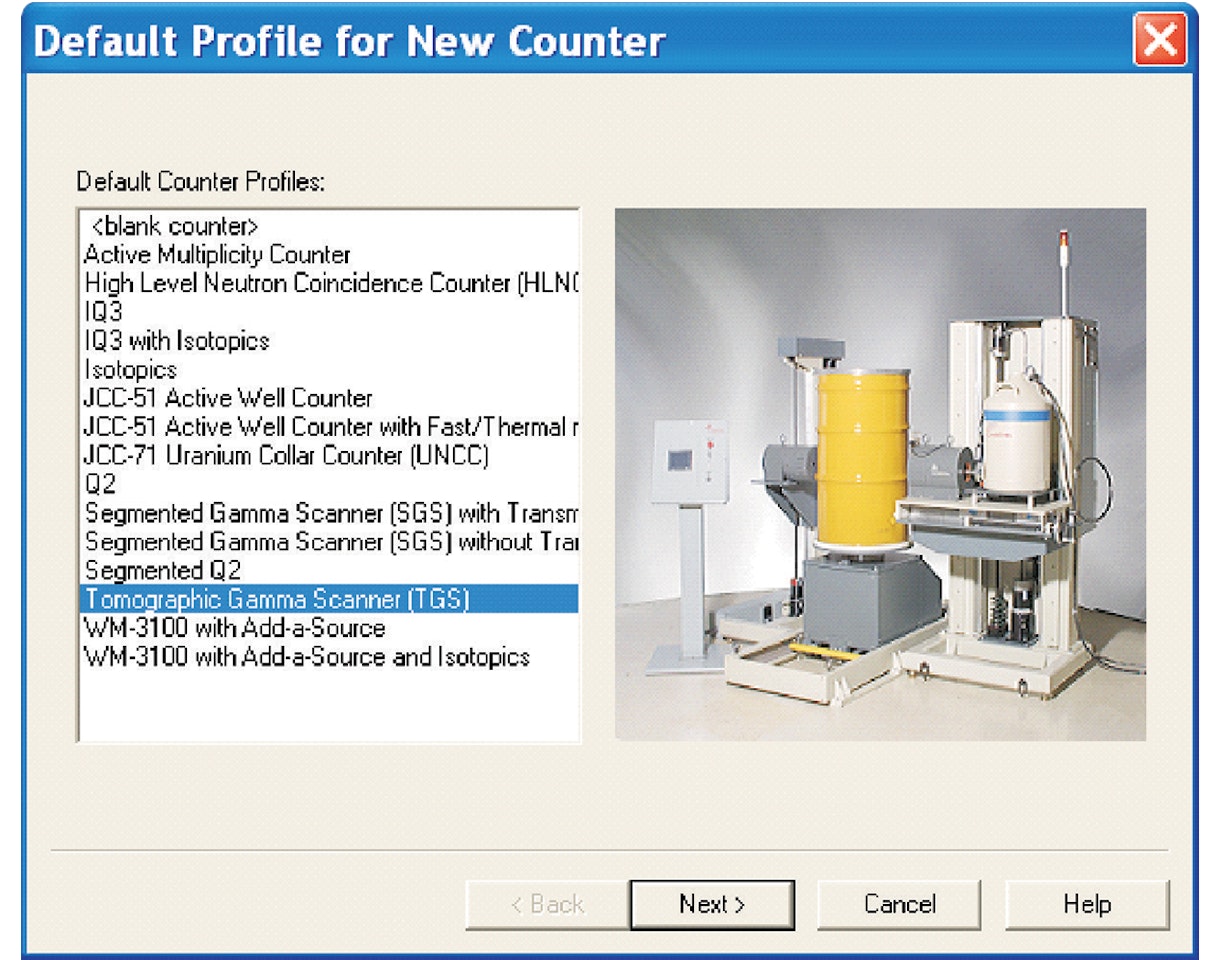Description
The accurate non-destructive assay of uranium bearing materials to determine uranium content is vital in nuclear safeguards, waste management, and fuel cycle process control measurements. In a climate of heightened concern for the possible diversion of special nuclear materials, there is a need in the nuclear community for continued maintenance and advancement of accurate uranium detection and verification tools.
Uranium measurements are typically difficult because of varying container shapes, container wall thicknesses, uranium chemical forms and other complications. Multi-Group Analysis for Uranium (MGAU software) was designed to improve the accuracy of these measurements over traditional methods, while simplifying or eliminating the setup and calibration steps necessary with other methodologies. MGAU software can therefore be used with minimal setup, by operators requiring minimal training, and it is easily applied to applications involving routine, repetitive measurements.
In its normal mode MGAU software uses information from the low energy region which includes both gamma and X-rays from 84 to 205 keV. The primary enrichment information is derived from the 235U and 238U emissions in the 90-94 keV energy range. Several peaks detected in the measured spectrum itself are used to develop a relative efficiency curve; i.e. the detector efficiency as a function of energy is determined, taking into account the amount of attenuation caused by the sample container, and the amount of self-absorption in the uranium material itself. This process eliminates the need for an efficiency calibration prior to making sample measurements.
In the enrichment-meter mode, MGAU software utilizes the 186 keV gamma line from 235U decay and requires just one calibration measurement with a reference standard of known enrichment and known container wall thickness. The results of this calibration measurement are automatically stored for further use on any samples with known container wall thicknesses. The enrichment meter mode is useful for very thick container walls where poor counting statistics in the spectrum may limit the results from the normal mode, and also can be used for analyzing uranium samples where the uranium isotopes are not in equilibrium with their daughter products (freshly separated uranium).
Key Benefits
- Fast and accurate uranium isotopics measurements
- No calibration standards required for isotopics measurements
- Ease of use for setup and operations; minimal operator training is required
Applications
- Nuclear Safeguards
- Inventory control at enrichment facilities
- Waste measurements
